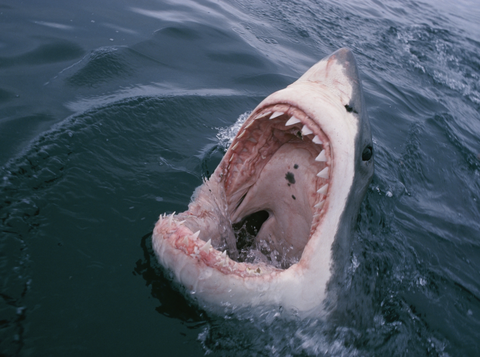The moment a great white shark attacks its own species was recorded off the coast of Australia, showing that mutual killing behavior is very common in this species.

A clip from the Nat Geo WILD documentary Cannibal Sharks shows a giant shark attacking its smaller counterpart. Divers witnessed a battle between two great white sharks off the coast of Neptune Island, South Australia, near the city of Adelaide. In a video shot in 2014, a diver shouted loudly as he saw a shark rise out of the water and rush towards another shark struggling in panic.
“I tried to stay calm to record the whole scene because what happened was so unbelievable. Great white sharks are evasive animals, so I was lucky to be there,” said Adam Malski, a diver. from Sydney, Australia, shares.

The body of a great white shark was bitten by a large piece of flesh by its mates. Photo: National Geo WILD.
The documentary also shares a photo taken in 2009 off the coast of North Stradbroke Island in Queensland, near Brisbane, in which a shark has half of its body grabbed by a larger one, revealing a patch of pink flesh. According to Sky News, the attacking shark was more than 5 meters long while the smaller one was 3.7 meters long. The small shark was bitten while being pulled out of a trap.

“What an interesting photo. I mean the bitten shark is also very large, almost 4 meters long but look at the size of the bite. That is a large piece of flesh, how much strength is needed to bite “The attacker himself must have been really big,” commented Dr. Mark Meekan, a biologist specializing in fish research at the Australian Institute of Marine Science.
According to Professor Michael Heithaus of the Department of Biology at Florida International University, shark cannibalism is more common than people think. For some large shark species such as buffalo sharks and hammerhead sharks, smaller sharks are their favorite prey. Experts say this behavior originated hundreds of millions of years ago. A study published in 2016 concluded that sharks living 300 million years ago could eat their young when food sources were limited.




